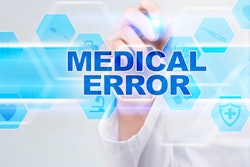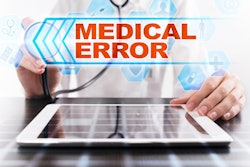
The U.K. Royal College of Radiologists (RCR) has released a practical guide on how to review and learn from excellence, discrepancies, and adverse events. The 36-page report contains nine key pieces of advice and can be downloaded free of charge.
The new document emphasizes the educational role of knowledge sharing at regular meetings where radiological discrepancies are anonymously reviewed alongside examples of excellence, and this process can improve practice and raise service levels, according to the authors.
"It is worth noting that not all discrepancies are errors, nor will they require a duty of candor process to be undertaken," they wrote. "Excellent diagnoses are equally as important in a learning environment."
They urge everybody to consider these nine standards when setting up and running events and learning meetings:
- Clinical engagement: All radiologists should attend a minimum of 50% of departmental meetings and should contribute at least one case a year.
- Organization and frequency: A minimum of six meetings per year should be held by each National Health Service (NHS) trust or hospital group. These may involve the whole radiology department.
- The chair: The chair should be appointed and remunerated fairly and should be able to demonstrate duties performed and output. This should be recorded in the job plan as an "additional responsibility."
- The notifier: The radiologist who has detected a discrepancy or clinical incident (the notifier) has certain duties to record it -- as all radiologists have -- and these recording duties should still be carried out regardless of whether or not the discrepancy or clinical incident is submitted to the meeting for anonymous discussion.
- The cases: Cases should be anonymized and discussed for the purposes of education only. The meetings should operate alongside but completely separate from candor, serious incident, disciplinary, and legal processes.
- The documentation: Standard emails should be sent to the radiologists involved in the submitted cases prior to discussion. Learning points from the cases discussed should be summarized and disseminated. Attendance and contribution should be recorded and distributed for appraisal.
- Feedback and reflection: Participating radiologists are encouraged to perform private reflection of the cases discussed. The chair is encouraged to identify patterns of errors and target teaching accordingly.
- The culture: The chair should ensure a culture of respectful sharing of knowledge with no blame or shame.
- Links with the RCR: It is important to inform the RCR's Radiology Events and Learning (REAL) panel about the chair's details so the person can be a contact point for exchange of views. The aim is to establish an inclusive network of individuals with an interest in and experience of radiology events and learning. The chair of the REAL panel should ensure submission of at least one case per year for consideration for publication in the REAL newsletter.
Reviewing and learning from excellence, discrepancies, and adverse events can provide evidence of reflective practice, improve outcomes, and, if performed in a supportive learning environment, contribute to the evidence for providers and users of the safety of a service, according to Dr. Caroline Rubin, RCR's vice president of clinical radiology.
 Dr. Caroline Rubin, vice president of clinical radiology at the RCR. Image courtesy of the RCR.
Dr. Caroline Rubin, vice president of clinical radiology at the RCR. Image courtesy of the RCR."A learning system is essential in an attempt to avoid repetition of discrepancies and to learn from excellence," she wrote in a foreword to the report. "As radiologists, we are constantly striving to improve the standards of service we provide to patients with a culture of learning, self-reflection, and personal development. Humans will always make errors and radiologists are no different. They will also have moments of brilliance."
Structuring the learning to help identify contributing factors can also help inform the organization of potential trends that can be addressed to mitigate against recurrence of discrepancies, to empower excellence, and to contribute to the enhancement of patient safety, Rubin added. Documentation of reflection and learning outcomes of the meeting should be anonymous to encourage submission and enhance learning.
These meetings should form part of a radiology quality-assurance program, she explained. Also, the RCR is currently working on guidance around the duty of candor, and more advice on this topic will be published later this year.
The new document was approved by the Clinical Radiology Professional Support and Standards Board at their meeting on 20 September 2019. You can download it free of charge from the RCR website. It should be read alongside these two RCR documents: "Lifelong learning and building teams using peer feedback" and "Cancer multidisciplinary team meetings -- standards for clinical radiologists (second edition)."



















